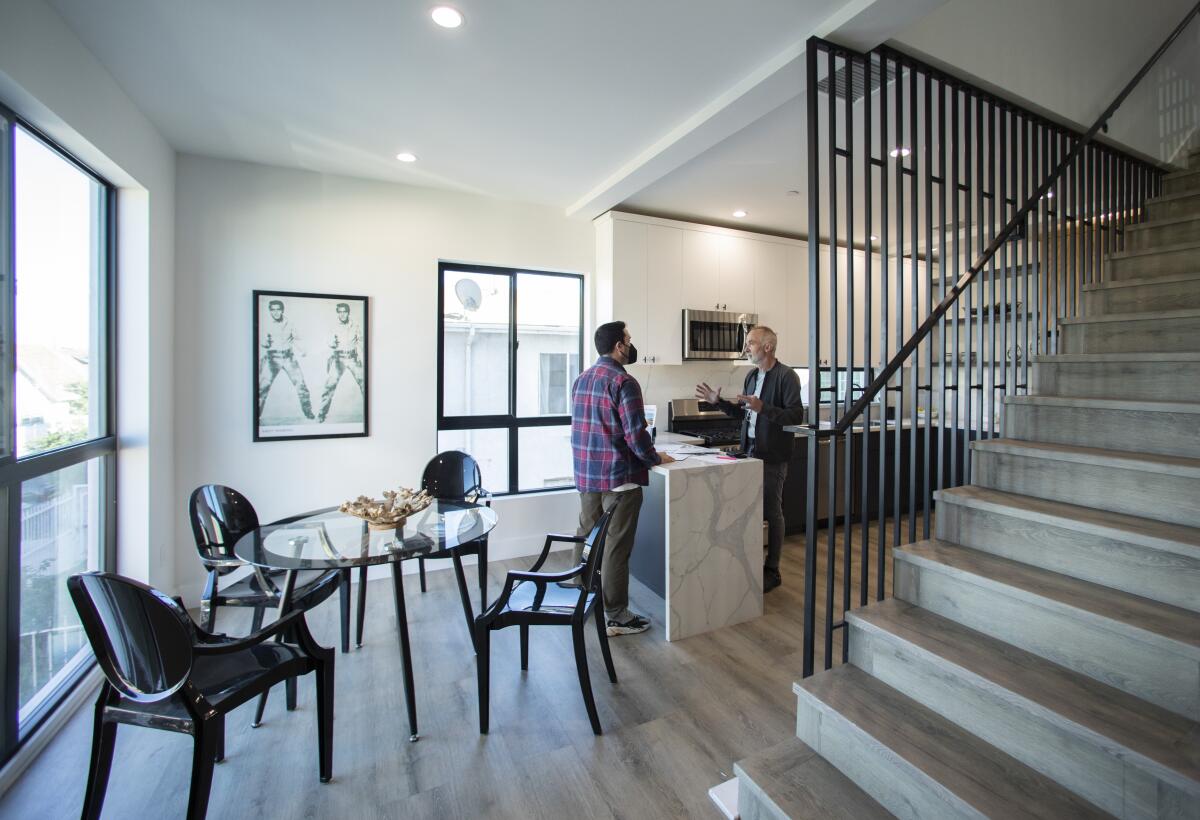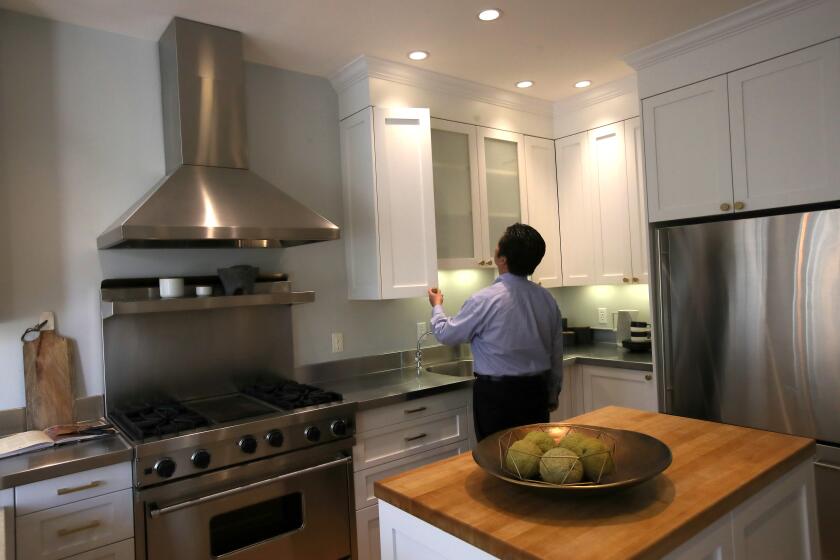Mortgage rates top 7% for the first time since 2002, chilling L.A. housing market

- Share via
The cost of buying a home took another leap this week as the average rate on the popular 30-year fixed-rate mortgage surpassed 7% for the first time since 2002.
It was just last month that rates climbed above 6% for the first time in 14 years. The latest dramatic jump makes a home purchase even more unaffordable and stands to further slow a market already reeling from the rising borrowing costs.
“It’s crazy,” said Tressa Pope, a Los Angeles-area mortgage broker. “Rates rose so rapidly that people weren’t prepared.”
Only in the early 1980s, another time of high inflation, did rates rise quicker than they have in recent months. Although rates are still below the historical average of 7.76%, it’s the sudden change that’s upending the market.
For much of the COVID-19 pandemic, the Federal Reserve’s easy money policies held mortgage interest rates below 3% and enabled people to make larger and larger offers.
Southern California home prices rose nearly 40% in two years. Pandemic boomtowns such as Boise, Idaho, and Phoenix saw larger gains.
But this year, inflation and the central bank’s efforts to tame it have caused rates to more than double.
With rates rising so quickly, buyers have had to try to buy homes with values set when money was cheap. Many can’t.
Home sales are plunging across the country and, in some markets, prices are falling but nowhere near fast enough to balance out the rising interest rates.
In Southern California, prices are now nearly 6% off their peak in May, according to Zillow.
In Los Angeles County, the typical home value, which Zillow defines as the average of the middle third of the market, was $835,546 in September, 6.7% below the peak.
With interest rates rising, home buyers may be more tempted by ARMs as a way to cut costs. Here are the potential pitfalls to consider.
On Thursday, mortgage firm Freddie Mac reported that the average cost on a 30-year fixed-rate home loan was 7.08% this week, up from 6.94% last week and 3.14% a year earlier.
If rates hold above 7%, economists said it’s likely to send prices down more than if they held in the 6% range, because most Americans need a mortgage to become homeowners.
An increase from 6% to 7.08% adds $475 to the monthly mortgage payment on a $835,546 house, assuming a borrower put 20% down.
Compared with the 3.14% rate of last year, the increase to above 7% adds an additional $1,614 monthly.
Another way to think of the difference? With a 3.14% mortgage rate, a $3,000 principal and interest payment would snag you a $873,600 house, with 20% down. With a 7.08% rate, the same payment gets you a $559,200 house.
Pope, founder of TPG Mortgage Lending, said a “big chunk” of her clients are now on the sidelines. Either they’ve been priced out altogether or are wary of making a poor financial decision, given the uncertainty over the direction of home prices and rates.
With home buying plans on hold, it’s also changing other aspects of people’s lives.
Florist Tracey Morris, 52, frequently drives 40 miles home to Buellton in the middle of the night after working weddings and events in Santa Barbara and its neighboring beach cities.
For a while, her condo’s rising equity during the pandemic gave her a chance to ditch the grueling commute and move closer to work. But she called off the plan when rates hit 6%, because she could no longer afford a home near Santa Barbara without significantly cutting back or getting a roommate.
So instead, she said, she’s “going to scale back some of my business and try to do less driving,” perhaps even take the time to travel.
“I do like the idea of not being overcommitted on a mortgage and having that extra freedom to go do something else,” she said.
After a decade of largely uninterrupted gains, Southern California home prices are now falling, the result of rising mortgage rates that have squashed demand.
For those still willing and able to buy, they may find it a relatively easier experience than at the beginning of the year.
Multiple offers are far less common, and sellers are increasingly willing to give buyers money to pay their closing costs or buy down their interest rate.
Pope said based on a recent quote for a $800,000 house with 5% down, a seller credit of $17,500 lowered a 6.75% rate to the equivalent of 4.75% for the first year and 5.75% for the second year, before reverting to the original rate for the remaining term of the loan. To qualify, borrowers must still show they can afford payments at 6.75%.
A similar-sized seller credit could also lower the rate for the entire 30 years to 6%, Pope said.
If home prices keep falling, it could eventually offset the rise in mortgage rates and allow more people to afford a home.
But for now, rising rates mean that if someone purchased a home at today’s somewhat lower home prices, they’d still pay hundreds of dollars more per month than buying at the peak, according to a Zillow analysis that assumed 20% down in both cases.
A growing number of economists do expect prices to keep declining through at least 2023. And a recent forecast from the Mortgage Bankers Assn. predicted that by the end of next year rates will have fallen to around 5.4%, driven lower by a slowing economy.
Many experts don’t predict a housing crash similar to the one that occurred during the Great Recession, in large part because of tighter lending standards. But some analysts say home prices could still decline by double-digit percentages from the peak.
More to Read
Sign up for Essential California
The most important California stories and recommendations in your inbox every morning.
You may occasionally receive promotional content from the Los Angeles Times.













